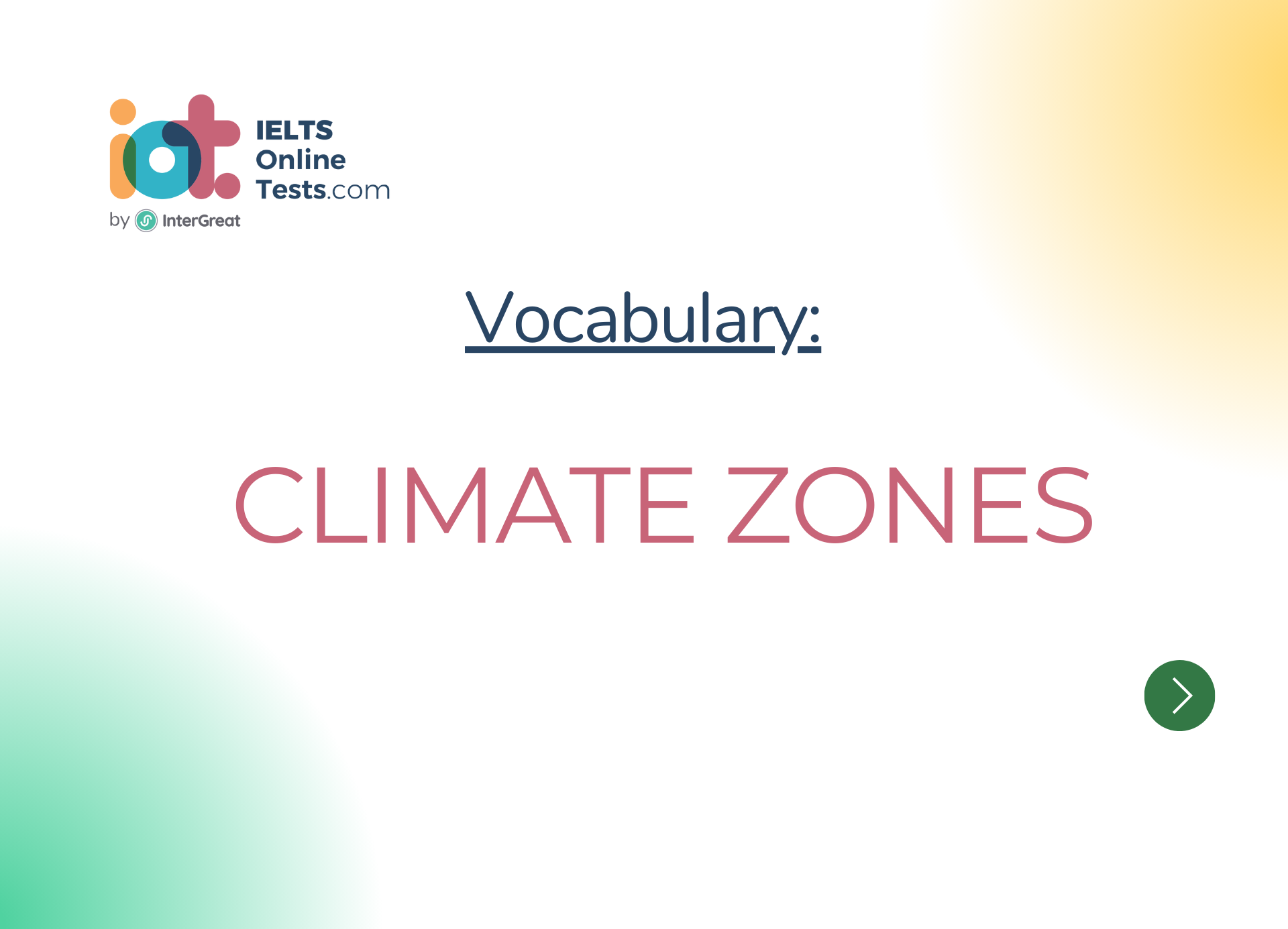
Climate zones
Here's a lesson on vocabulary related to "Climate Zones" for the IELTS band score 3.0-4.5:
I. Tropical Climate:
Definition: Characterized by high temperatures and abundant rainfall throughout the year.
Vocabulary: Tropical, heat, humidity, rainforest, monsoon.
Example: Countries near the equator often have a tropical climate.
II. Desert Climate:
Definition: Characterized by high temperatures and very little rainfall.
Vocabulary: Desert, arid, dry, sand dunes, oasis.
Example: The Sahara Desert is known for its extreme desert climate.
III. Mediterranean Climate:
Definition: Characterized by mild, wet winters and hot, dry summers.
Vocabulary: Mediterranean, mild, temperate, coastline, olive trees.
Example: The Mediterranean region is famous for its Mediterranean climate.
IV. Temperate Climate:
Definition: Characterized by moderate temperatures and distinct seasons.
Vocabulary: Temperate, moderate, seasons, deciduous forest.
Example: Many countries in Europe have a temperate climate.
V. Continental Climate:
Definition: Characterized by hot summers and cold winters, with a large temperature range.
Vocabulary: Continental, extreme, temperature range, prairie, steppe.
Example: The Midwest region of the United States experiences a continental climate.
VI. Polar Climate:
Definition: Characterized by extremely cold temperatures and little precipitation.
Vocabulary: Polar, freezing, tundra, ice caps, polar bears.
Example: The Arctic and Antarctic regions have a polar climate.
VII. Mountain Climate:
Definition: Characterized by cooler temperatures at higher altitudes.
Vocabulary: Mountain, altitude, alpine, snow-capped peaks.
Example: The Rocky Mountains have a mountain climate with colder temperatures.
Remember to practice using these vocabulary words in sentences and conversations to improve your understanding and fluency in English.




